It wasn’t until I had been collecting knives for several decades that I discovered one of the neatest blades around — and one of which I had never heard. The venerable Opinel No. 8 model was not just old school, it was Old Country cool.
My first encounter with the French cutlery maker was on a trip to New York City back in 2006. At the Museum of Modern Art, the magnifique Opinel No. 8 knife was displayed, owing to its beautiful combination of clip point Yatagan-style blade and elegant natural wood handle.
The Opinel No. 8 Background
Joseph Opinel began his knife-manufacturing business in the eastern France region of Savoie in 1890 — over 130 years ago. His father had a workshop forging agricultural tools for peasants in the area. Joseph, a curious 18-year-old, made his original pocketknife while working in the shop. That first knife started a titan of a company that would make 6.5 million knives in 2023 alone.
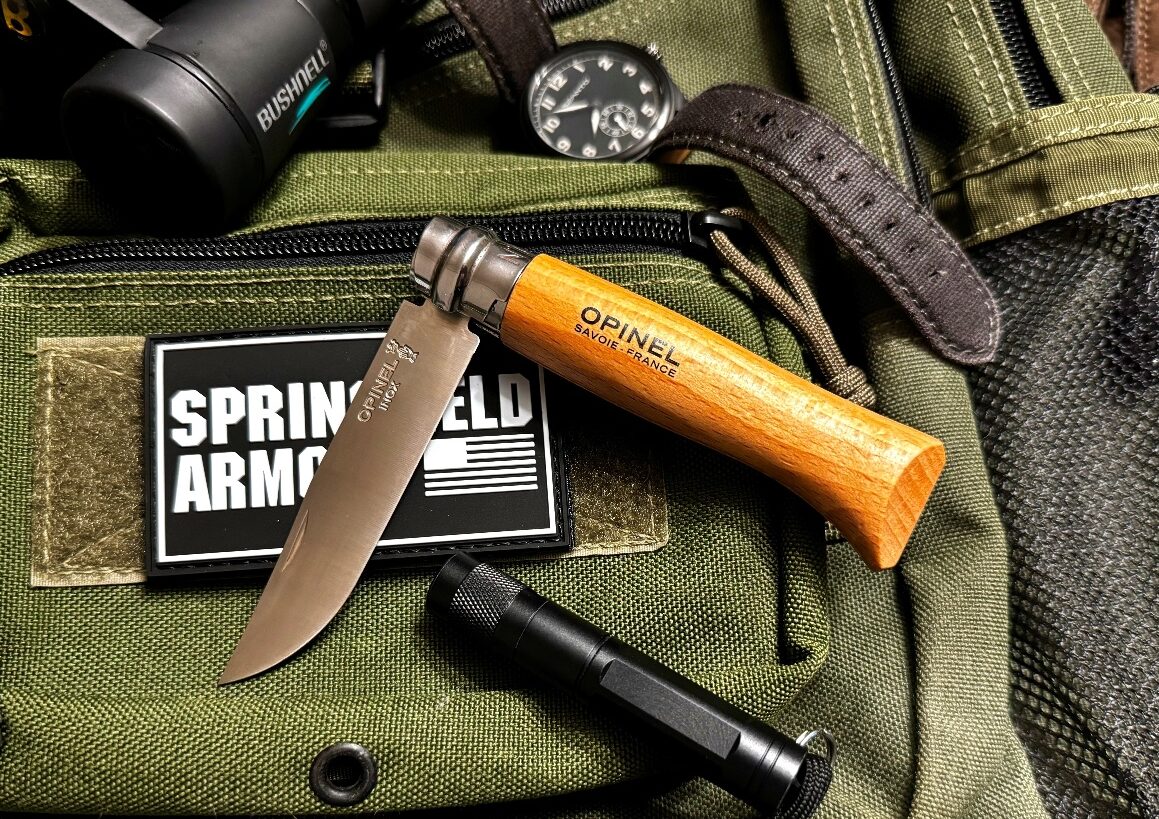
The Opinel knife is a simple design with but five parts: the blade, the handle, the fixed ring, the rivet, and the rotating ring (added in 1955). Joseph sought to make knives using “modern technologies” of the time. He invented a circular saw to cut a channel in each handle so as not to weaken the wood by splitting it. While his father’s forge hand-made each artisan tool, Joseph built racks of grinding wheels for workers to lay over in the prone position so multiple blades could be ground simultaneously. Opinel became a true mass manufacturing business.
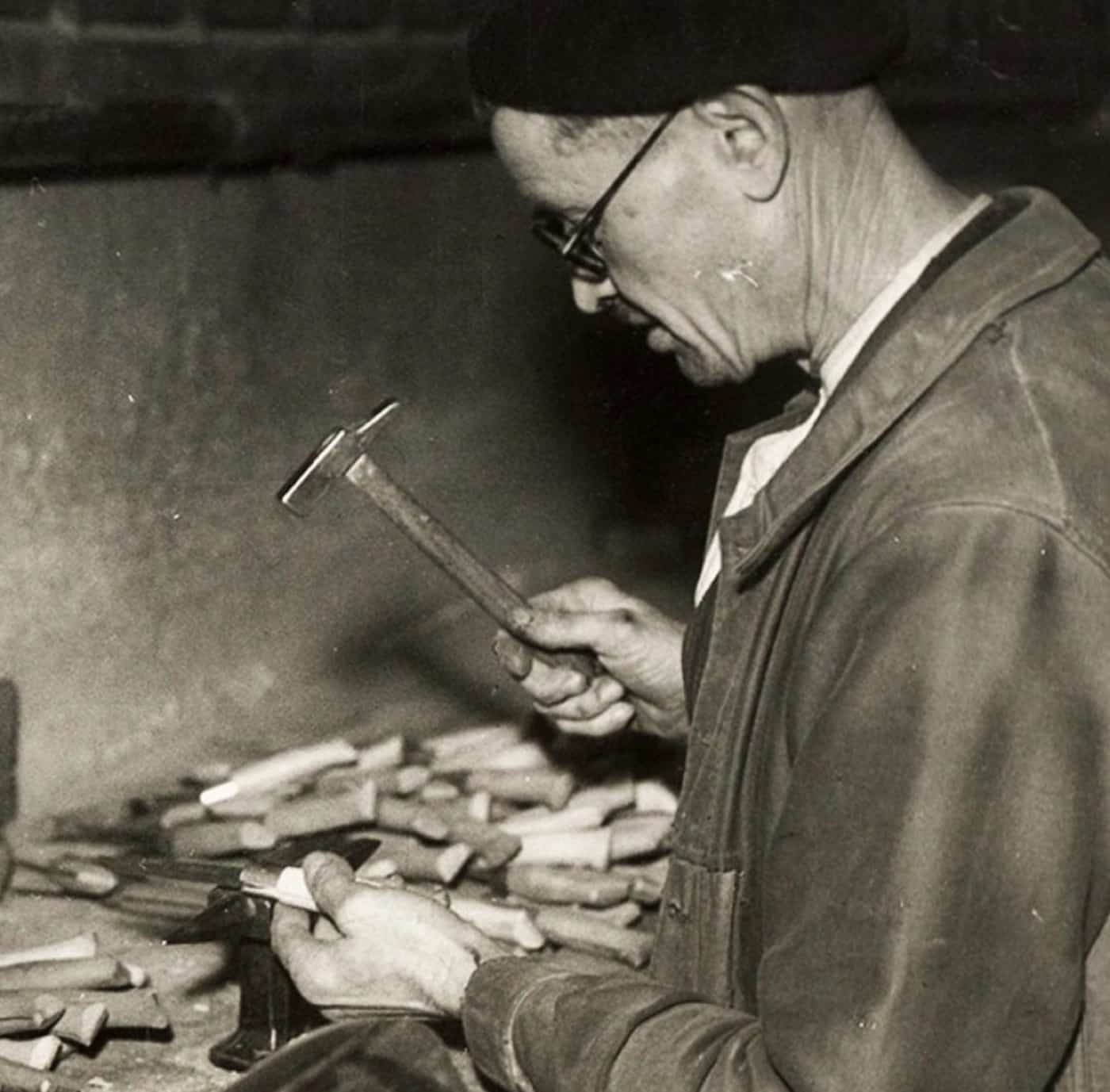
The Opinel No. 8 knife is a dedicated cutting tool. Whether a 3.25” blade of French high carbon AFNR XC90 or the stain-resistant Swedish Sandvik 12C27 Modified stainless steel, the thinly full flat ground Opinel is formidable at its lone task of making one thing into two. While the XC90, or Carbone, is a bit softer than the stainless counterpart, the Carbone develops a nice patina on the blade from use and exposure to oils and acids. The 12C27 Mod, marked INOX on the blade for inoxydable or stain resistant, will not develop such coloration.
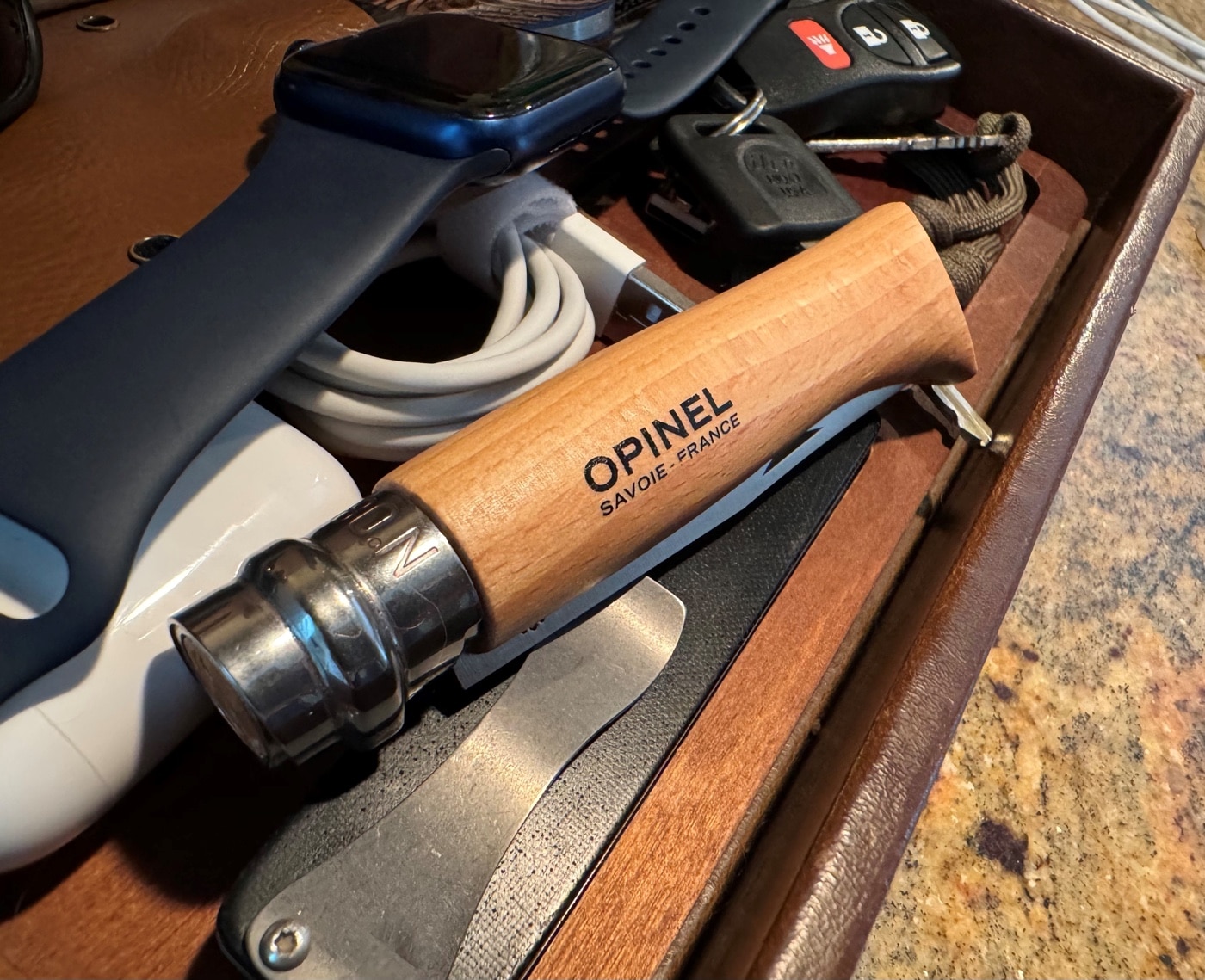
Some users opt to develop the Carbone’s patina on their own, adding coats of mustard or vinegar and then wiping these from the blades when the desired colorations have set in. You can stab your Carbone into an onion to have the same result. The patina will provide some protection from rust on the blade, but carbon steel needs care, cleaning, and a coating of oil or wax.
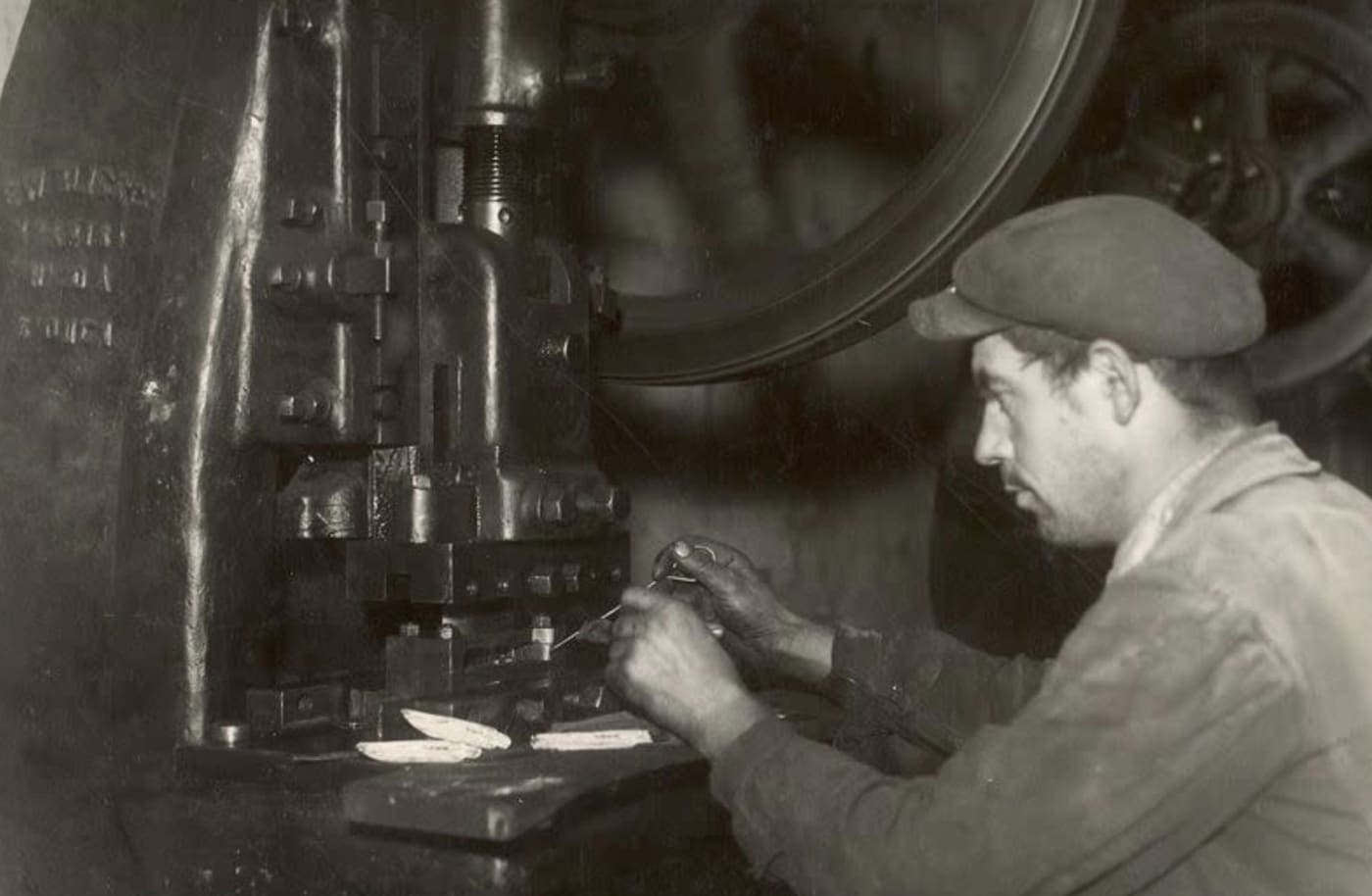
Opinel’s knives and other tools have several distinctive markings on the blades. Under the Opinel name will be either INOX or CARBONE denoting the steel. Further, said best by Opinel, “In 1565, King of France Charles IX commanded every knife maker to stamp an emblem on their products to guarantee their origin and quality. In 1909, in order to honor this tradition, Joseph Opinel chose the Crowned Hand as his emblem…as it represents the blessing hand of Saint Jean-Baptiste which is featured on the coat of arms of the city of Sant-Jean-de-Maurienne.”
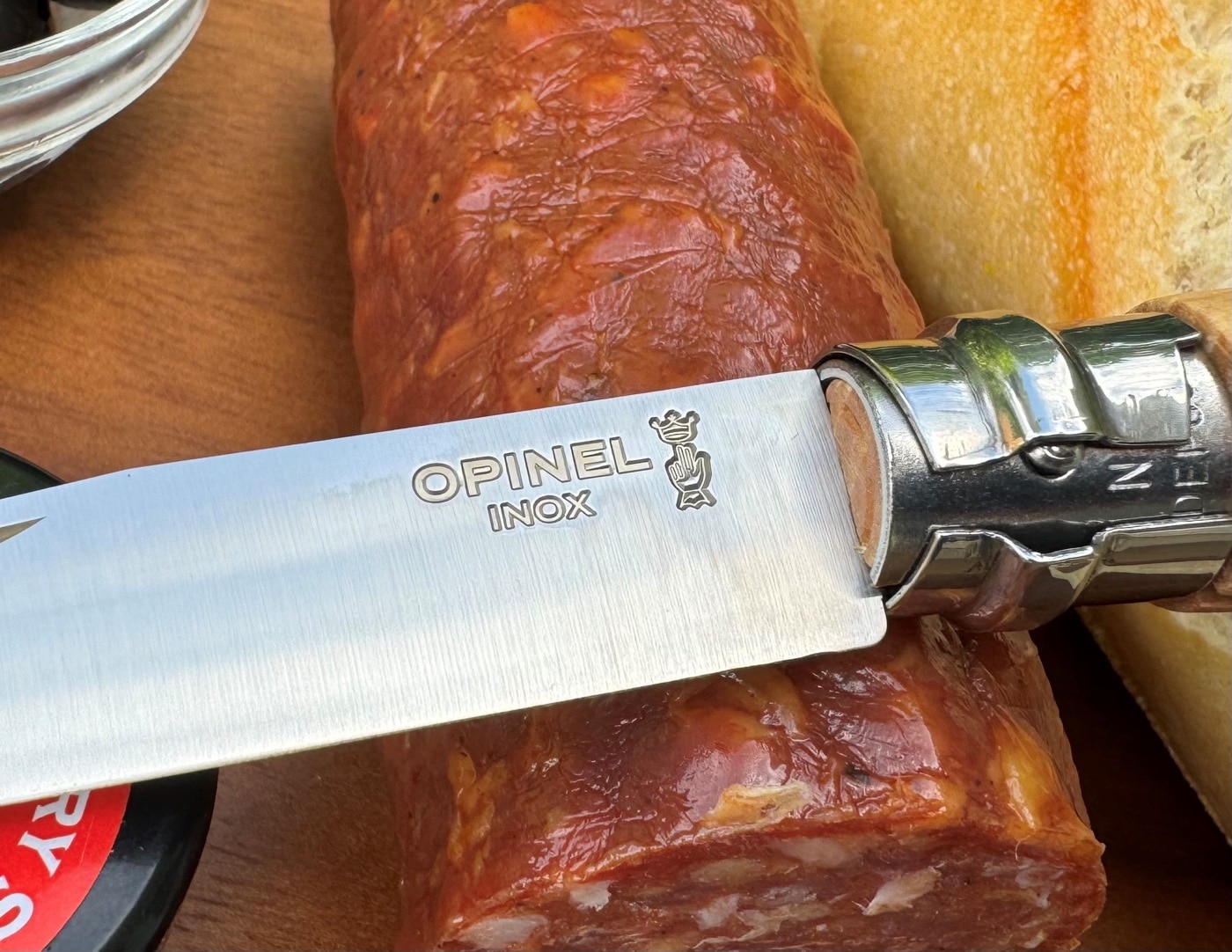
The standard Opinel beechwood handle was shaped to fit well in one’s hand. To that end, there are twelve models in this Opinel style with varying lengths. They will accommodate different-sized hands and also specific tasks for the knives, such as pruning or mushroom harvesting. Opinel now makes its signature handles in many materials like exotic woods and synthetics.
As to the wooden handle, in its factory form, it is not protected from moisture. After use, Opinel recommends cleaning the knife with warm water and letting the knife dry completely before using it again. They further recommend using an edible plant-based oil to wipe down the knife. A search of the internet of things will direct you to beeswax, walnut oil, and various other treatments.
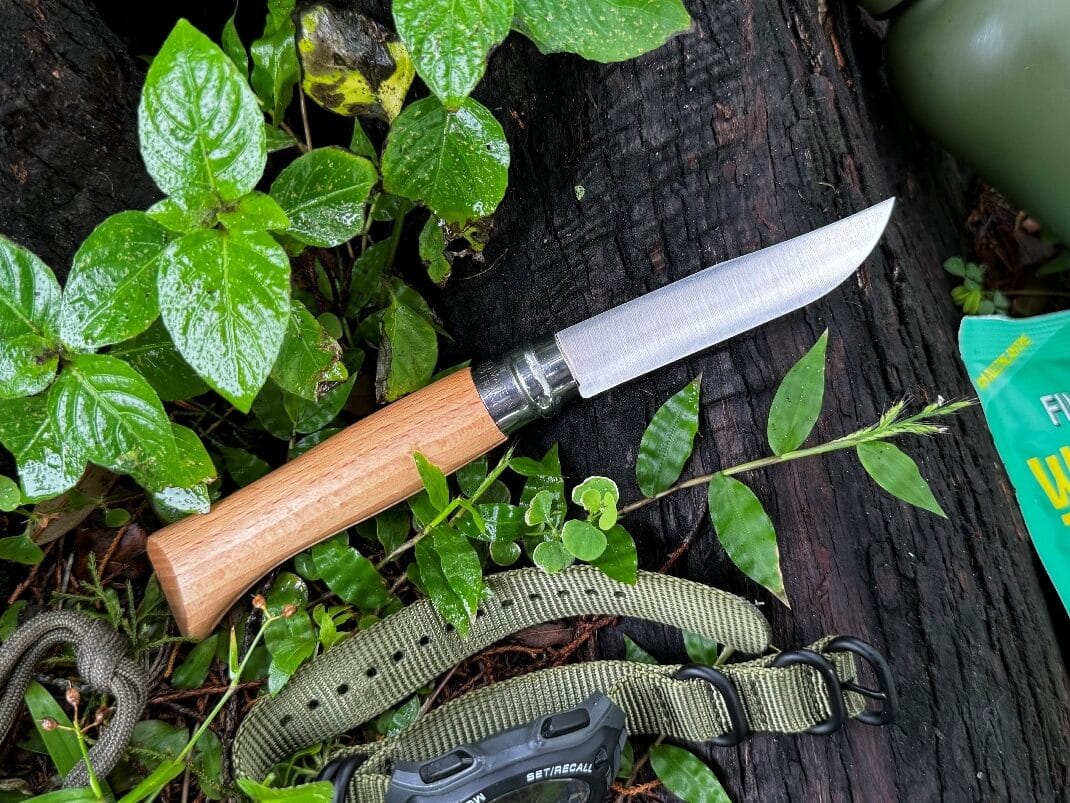
If your Opinel is subjected to moisture, the wood may swell and prevent the blade from deploying with its nail nick. Opinel suggests what they term the “coup du savoyard,” a hit or rapping motion of the butt of the knife on a solid surface. This should dislodge the blade and allow it to be pried the rest of the way open. Of course, this would be unnecessary if you treated your wood handles ahead of time. My beechwood remains as the factory made it.
Unique Safety on a Folding Knife
The Opinel knife is unique in its rudimentary safety design. The rotating Virobloc ring, or ferrule, can be turned several degrees either clockwise or counterclockwise to mechanically lock the blade in the open position (1955).
This same ferrule, when turned clockwise, will also lock the blade closed (2000). It is an engineering marvel which other tool makers no doubt wished they had envisioned.
[Editor’s Note: Read more about knife lock types.]
Versions of the Classic Opinel Knife
There are many variations of the original knives. Newer Opinels can be had with such features as 110-decibel whistles, shackle keys, fire starters, corkscrews, standard 1” Phillips and slotted bits, and serrated blades. In addition to sheaths, some models even have tip-down pocket clips, previously unheard of on these historic knives.
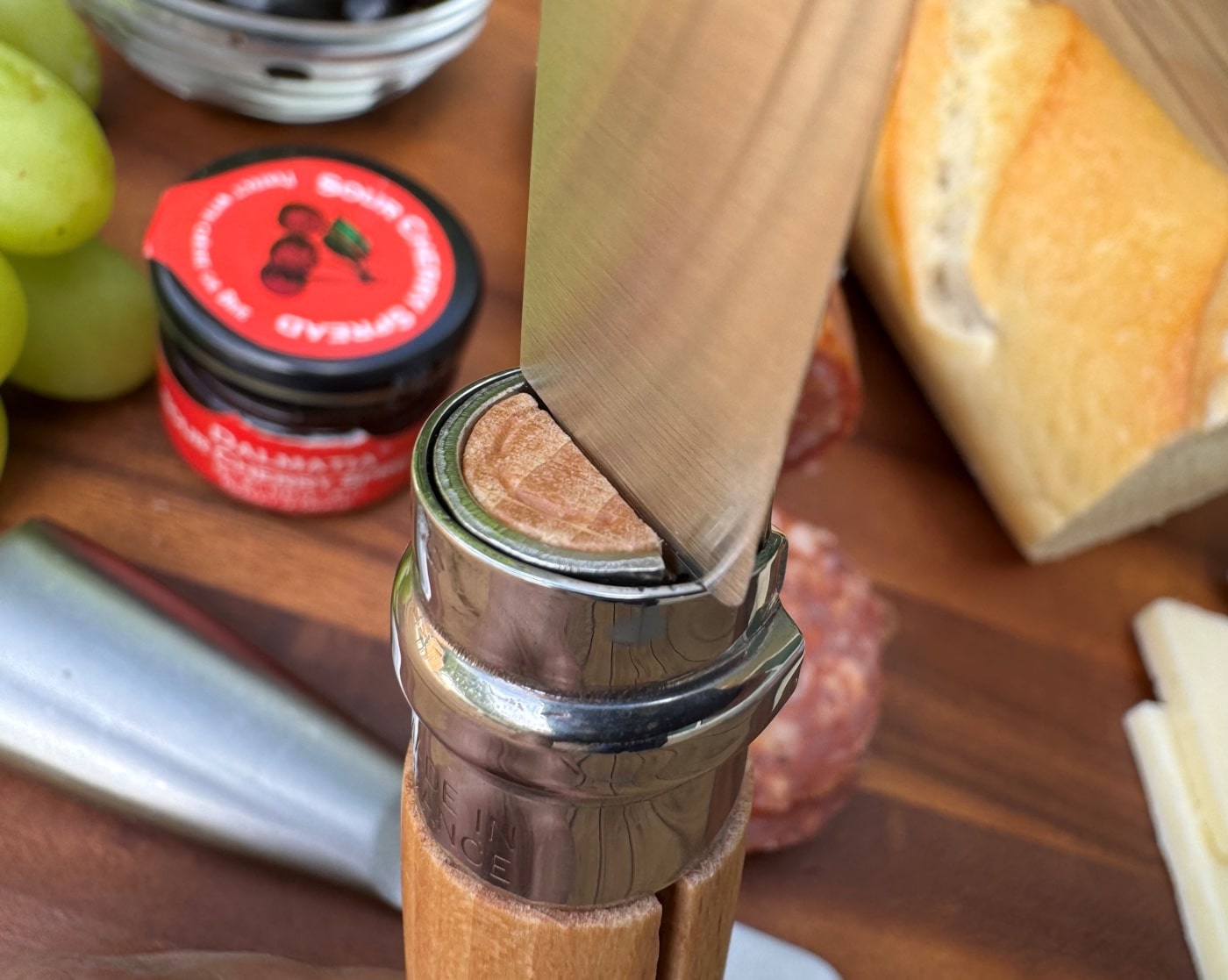
The Opinel family of knives is for utility and as such the company has over 250 products from specialty knives, chefs and table knives, gardening tools, and kids’ knives. Yes, kids’ knives. Some are for adventuring and have rounded tips. Others are made to teach little ones good cutlery handling in the kitchen and feature protective guards for fingers and large rings to instruct proper hand positioning out of the way of the sharp steel.
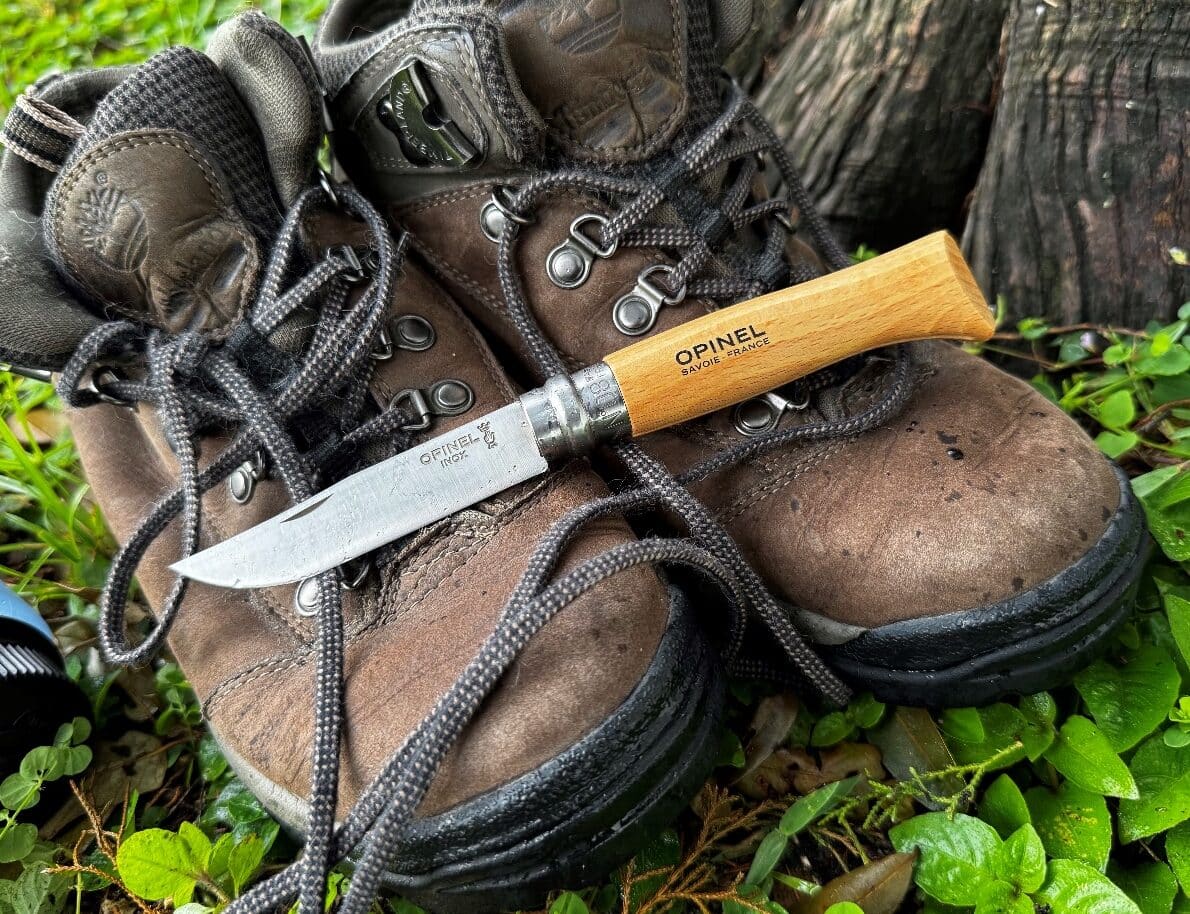
With such a rich history, one would think it would be easy to find a photograph of an actual Opinel in a French soldier’s grip, such as slicing some cheese, fruit, or a random object in World War I, World War II, or some regional conflict. I had no such luck in hours of scouring the web. Undoubtedly, a utility or kitchen knife was not the stuff of early war photos, but an Opinel would have served in field kitchens or other basic tasks.
Final Thoughts on the Opinel No. 8 Knife
My personal Opinel No. 8 has exceeded expectations in the kitchen, workshop, and garage. On hikes, the No. 8 carries easily at its feathery 1.6 ounces and with its round profile.
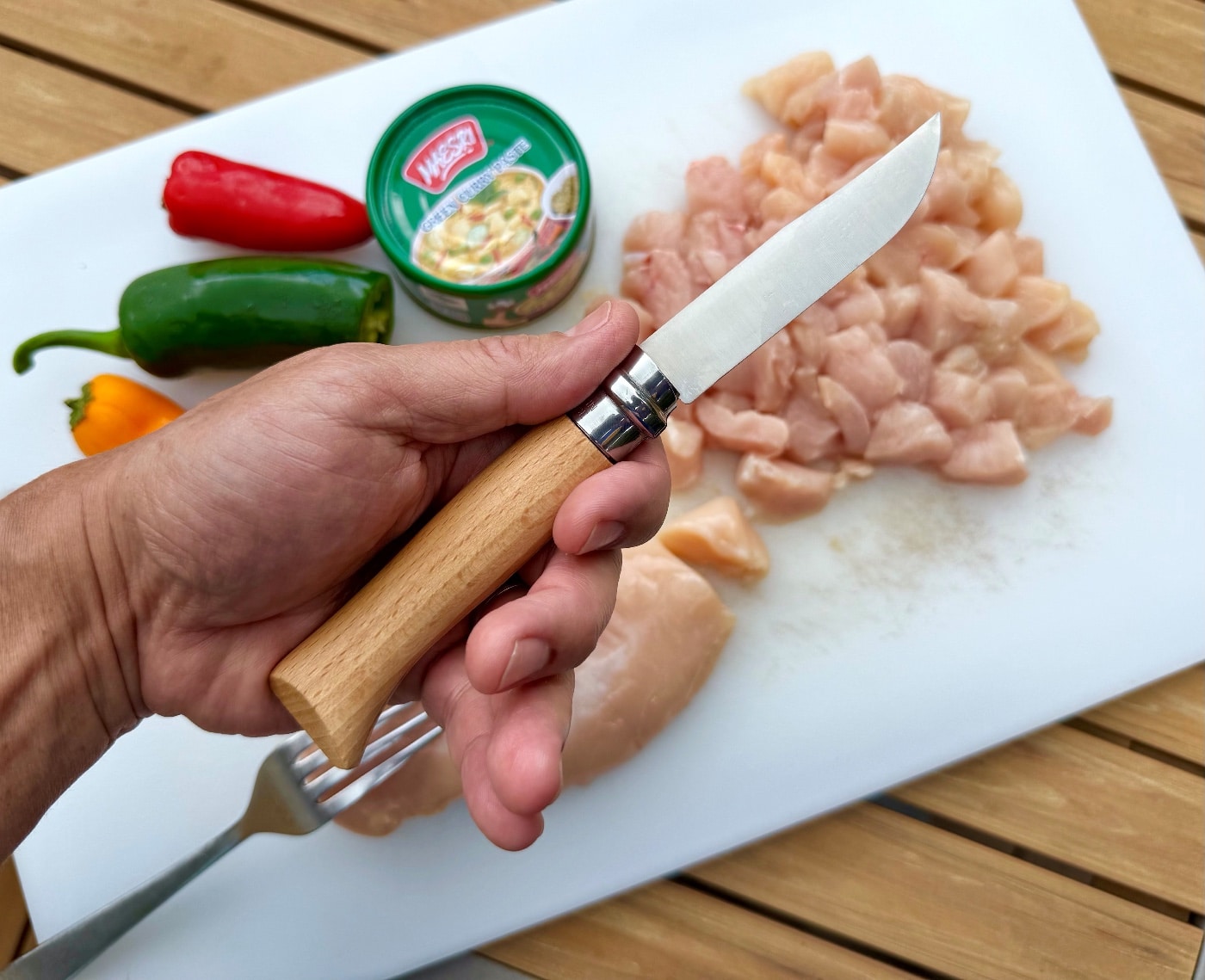
As noted, I saw my first Opinel No. 8 in New York City while on vacation. Before I departed the Big Apple, I purchased a No. 8 for 15 bucks at a local knife stall. Nearly 20 years later, the same knife will now set you back just 19 dollars retail. That is an unbeatable value. And, more importantly, you will be buying yourself a piece of enduring blade history.
Editor’s Note: Please be sure to check out The Armory Life Forum, where you can comment about our daily articles, as well as just talk guns and gear. Click the “Go To Forum Thread” link below to jump in and discuss this article and much more!
Join the Discussion
Featured in this article
Read the full article here






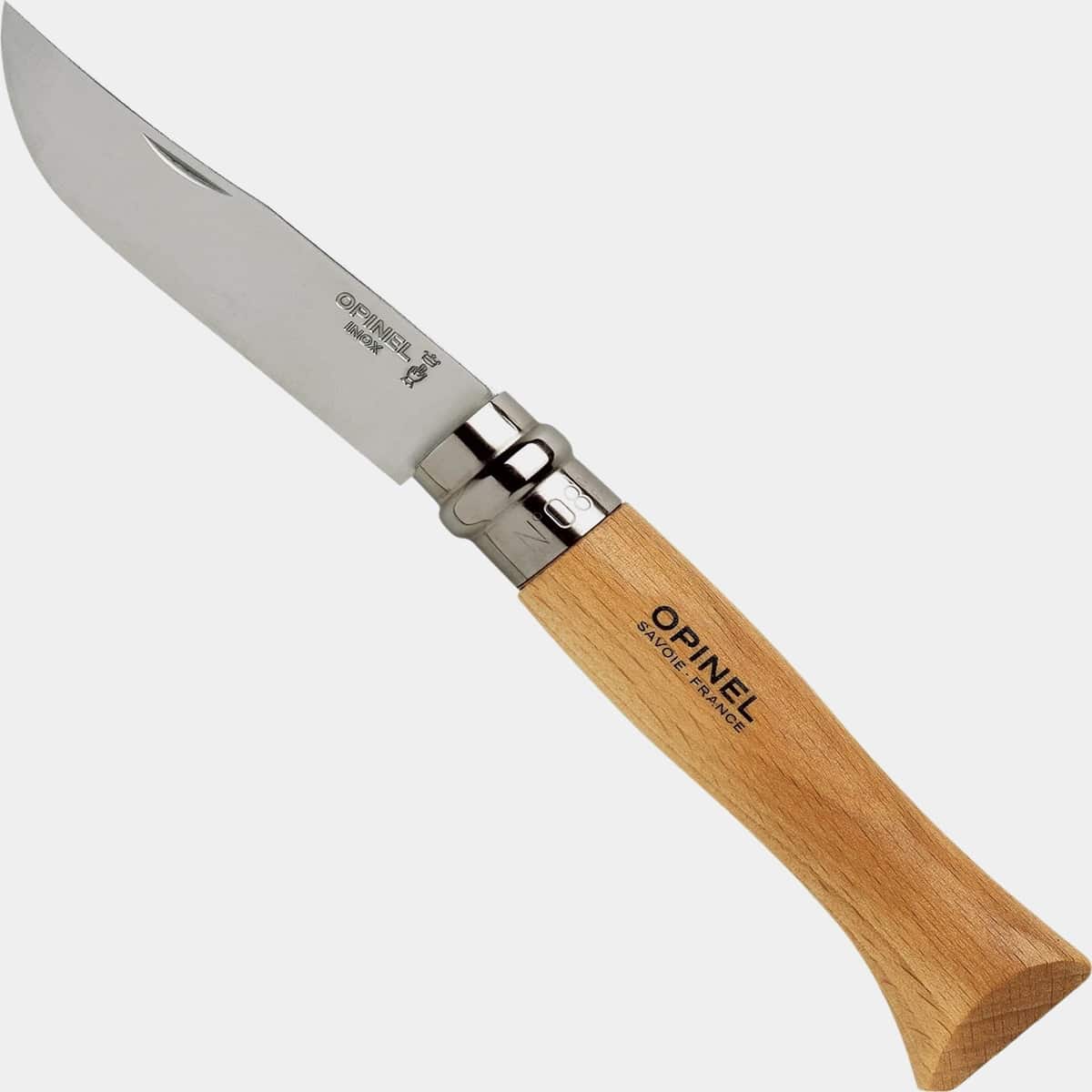



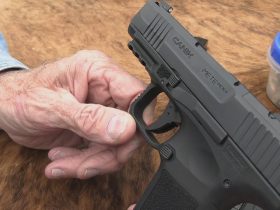








Leave a Reply